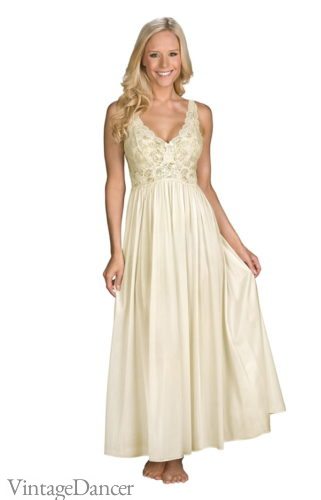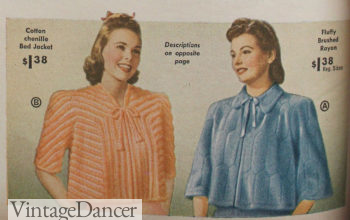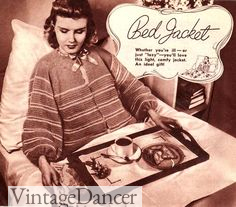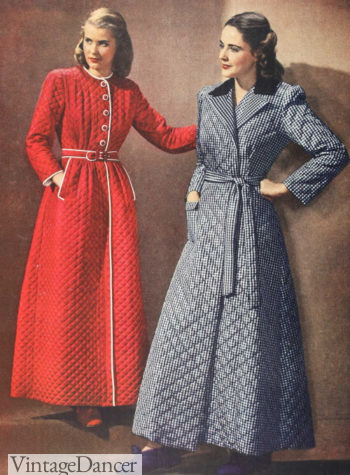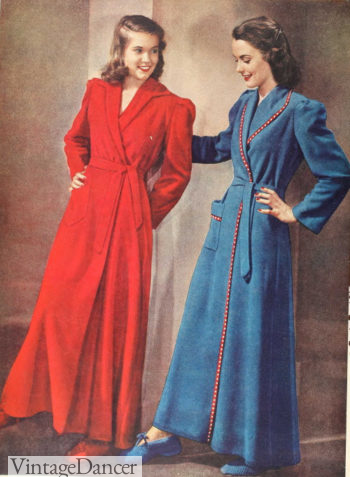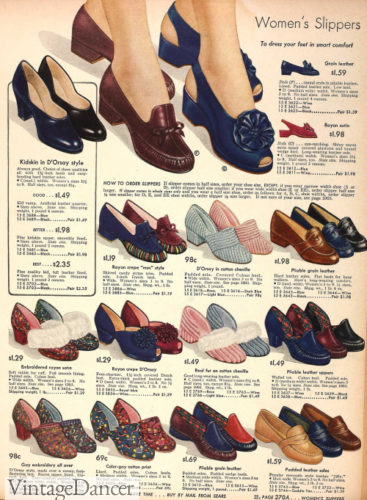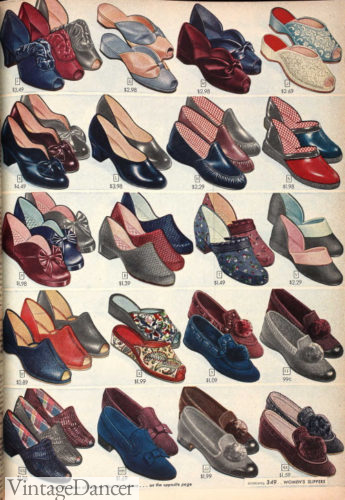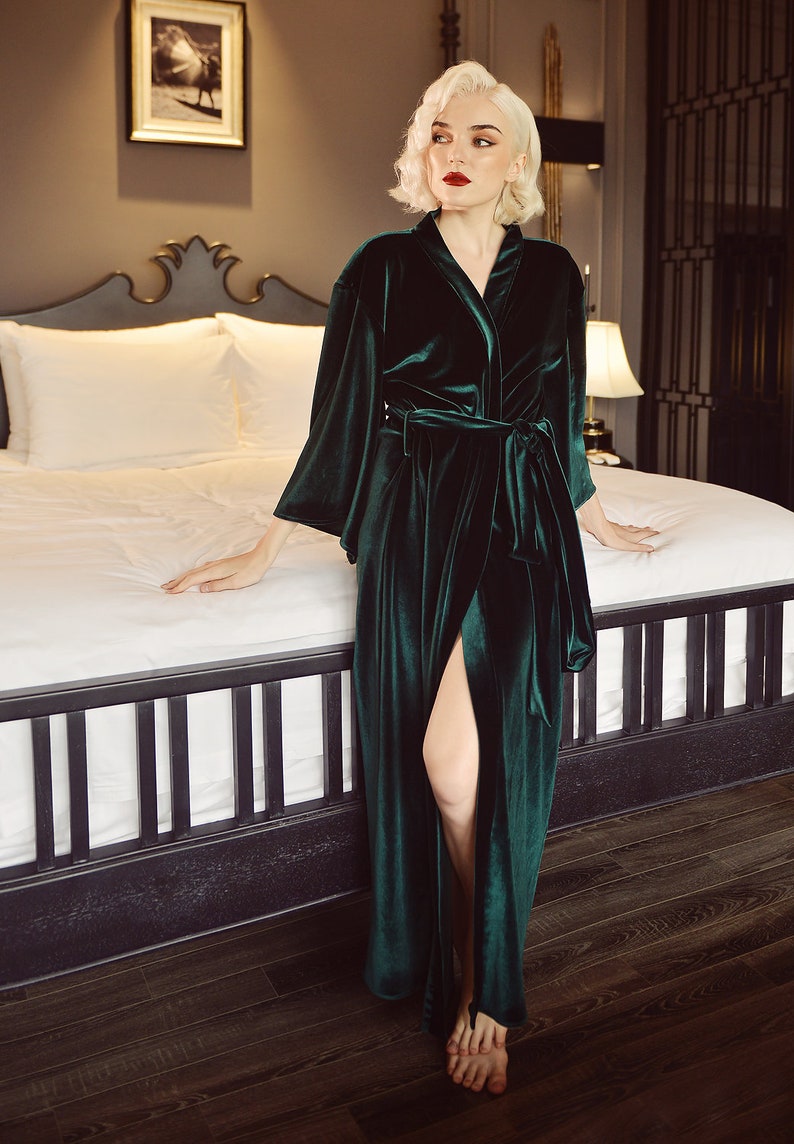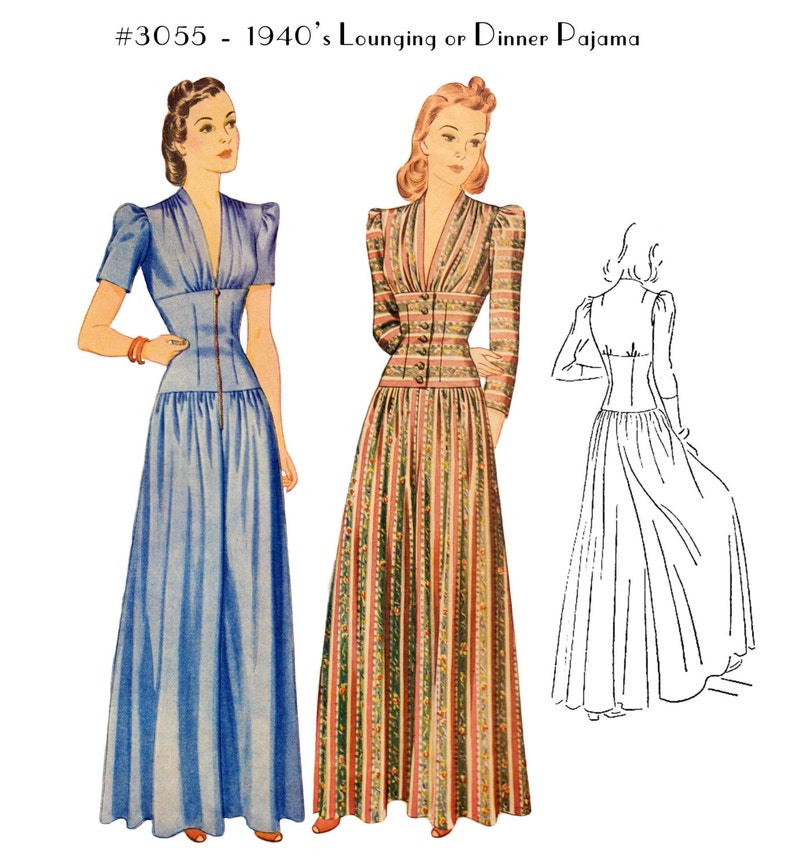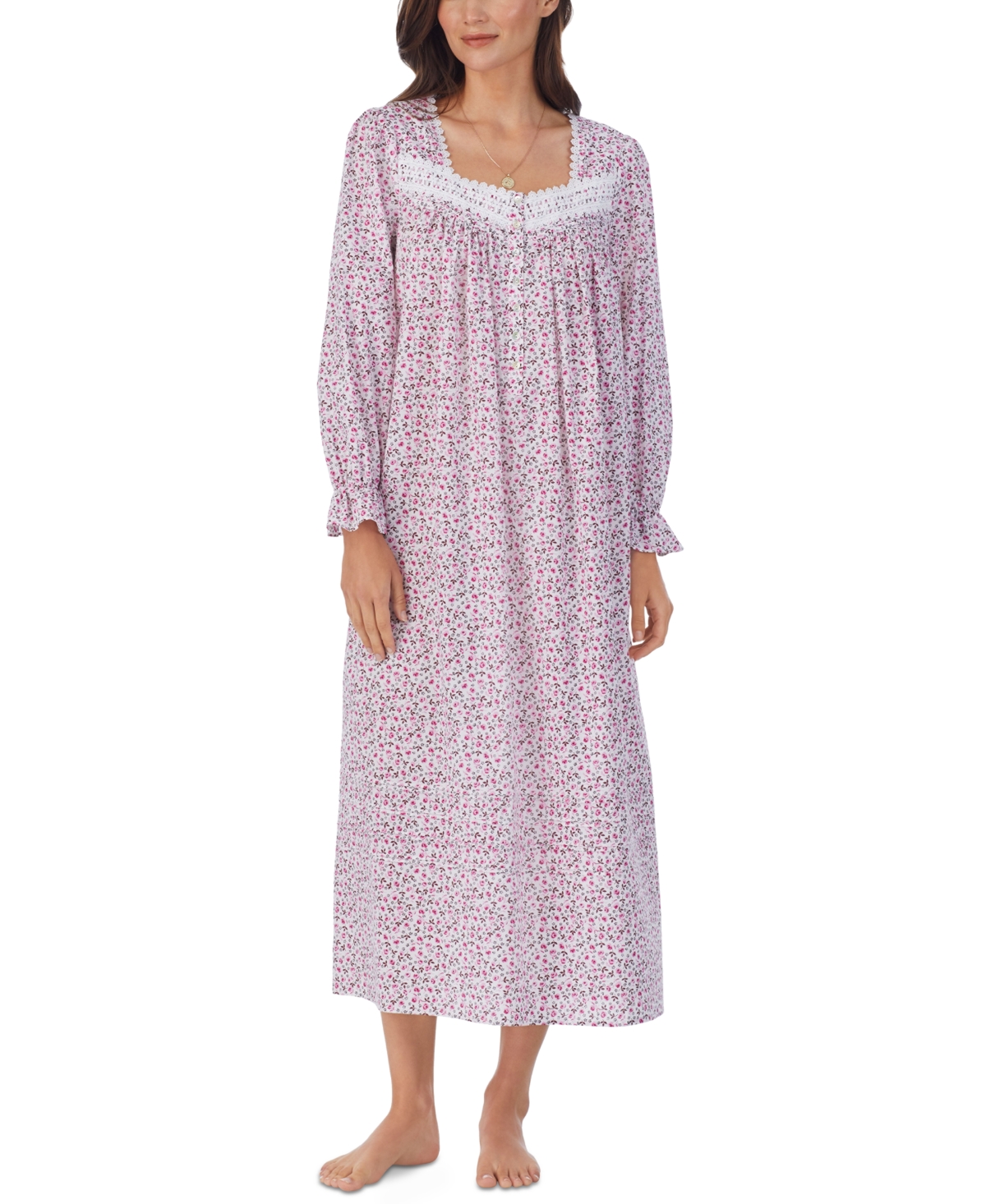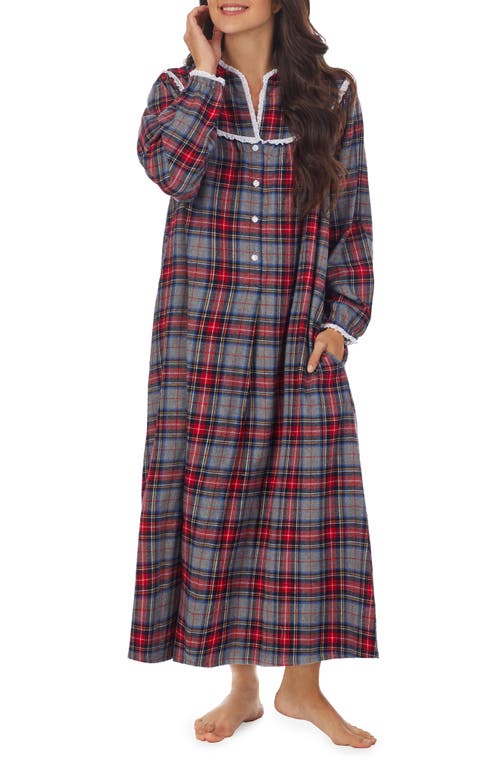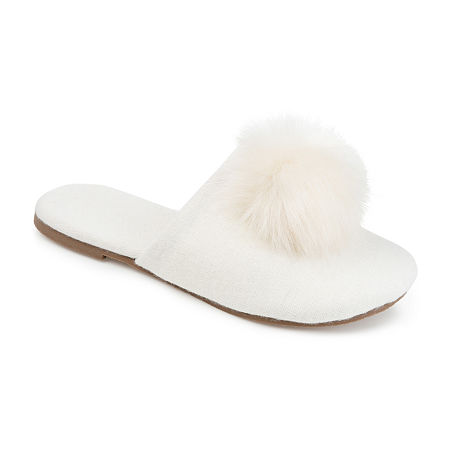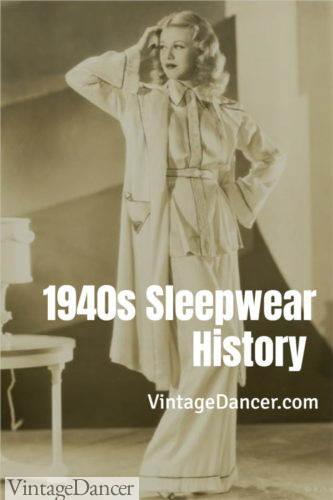
Women’s 1940s sleepwear was simple and practical. For women, the design stemmed from two directions. The ’30s bias cut negligee was romantic, soft, and dreamy- a perfect end of the day pick me up during hard times, while the other was the man-tailored style that was a direct mimic of men’s sleepwear pajamas. Women wore both styles as nightgowns in cotton, cotton flannel, rayon, and rayon satin two piece pajamas. They would also wear a bedjacket, robe, or house coat to put over the nightgown before bed and in the morning.
Most women (about 75%) purchased their sleepwear ready-made. Half of them wore nightgowns, one quarter wore pajamas, and the other quarter made their own or wore something else to sleep in. The younger and more urban the woman, the more likely she was to purchase her sleepwear and choose pajamas over long nightgowns. Cotton was the preferred fabric, with rayon being the next choice for nightgowns. The warmth and durability of cotton over the draping style of rayon was what drove most women to choosing it for their sleepwear (1947 research study).
1940s Nightgowns
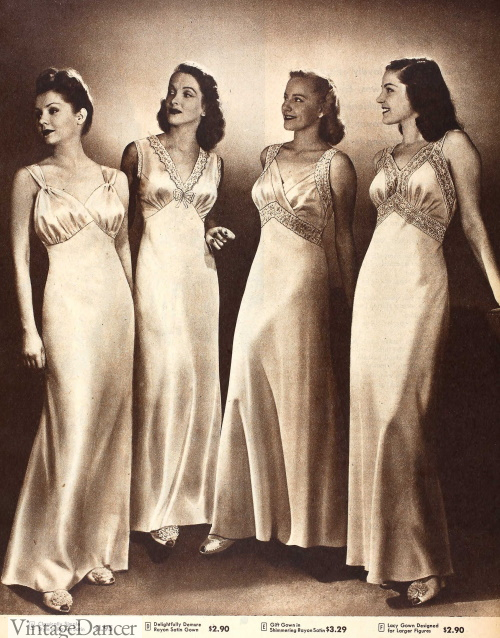
1946 slip like nightgowns
1940s nightgowns looked like a slip – they were made of silk, rayon, or rayon satin that flowed nicely over the body in a bias cut. Nightgowns cut on the bias are more form fitting yet stretch with movement. A sturdier and more spacious straight cut with gathers under the bust or waist line was more practical although less pretty.
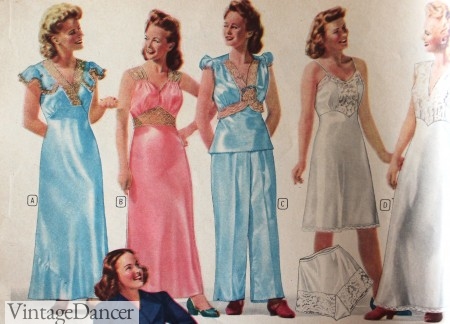
1943 Rayon Nightgowns and Pajama
Nightgowns were usually ankle-length and were fitted in the bodice and flared out to an A-line shaped skirt. These types of nightgowns had a low V-neck that was often decorated with lace and were usually sleeveless or had thin straps. They also sometimes had very short cap sleeves. An empire waist was popular – there would be stitching or lace underneath the bustline and the dress would flow out from there. Soft pastel colors were popular – white, peach, ivory, light pink and light blue were most often worn.
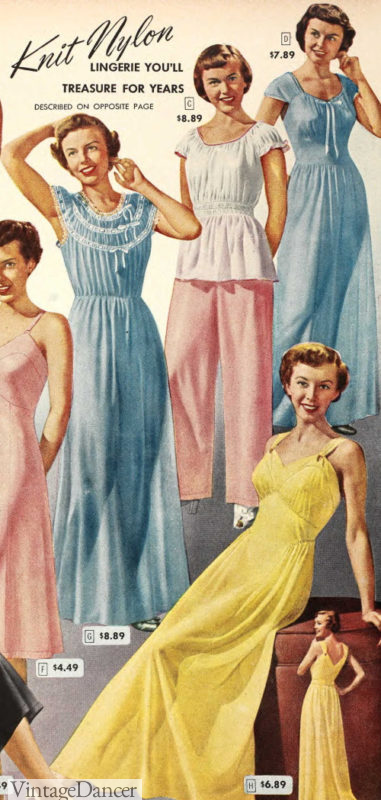
1949 sheer nightgowns, pajama
Women also often went for comfort in their sleepwear, choosing nightgowns in cotton or warmer cotton flannel. These were boxy fitting, often without a defined waist. They could be sleeveless or have short cap sleeves. Some also had long bell sleeves for extra warmth. More casual nightgowns like this were sometimes decorated with lace or eyelet at the neck and sleeves.
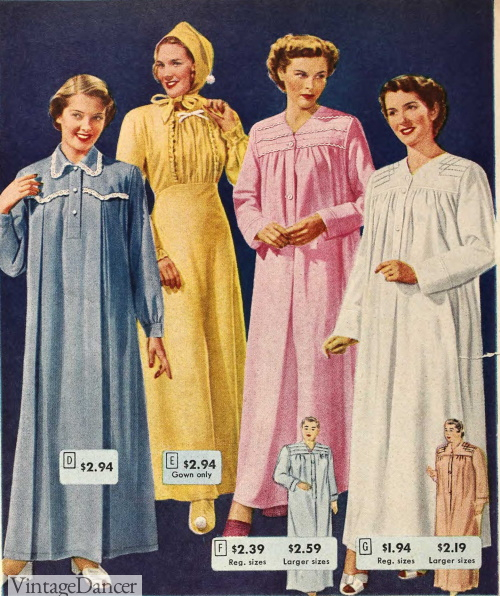
1949 winter nightgowns
Batiste and cotton crepe were nice summer weights, as well as rayon or silk crepes and satin. Soft colors were still used, and large and small floral patterns were popular as well. Sleeved nightgowns often buttoned up the front to a high, rounded collar. Sleeveless ones could button up the back and have a rounded or small v-neckline. They were primarily ankle-length, although many only came to mid-calf.
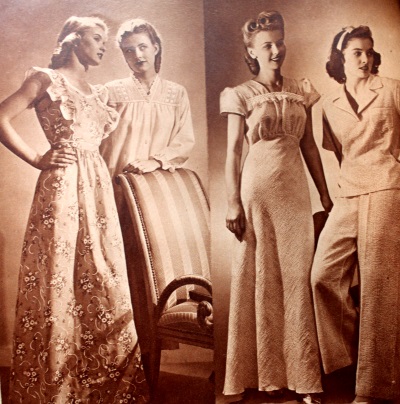
1940s Cotton Sleepwear
In heavy winter, cotton flannel or any thick textured cotton was used for maximum warmth. Cotton fabrics were outing flannel, loincloth, and nainsnook.
Cotton knits were also very popular, especially with a snug wrist and ankle band to really trap in heat and avoid the dreaded roll-up of loose legs.
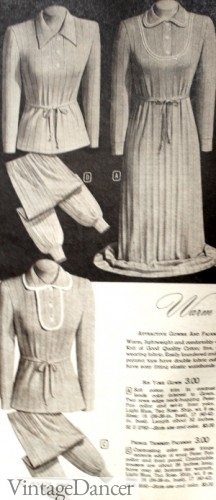
1940s Knit nightgown and pajama set
The quilted nightgown was especially common in all types of winter climates. Its stiffness lacked any shape or need for trim but boy were they warm … and colorful! Wearing bright colors inappropriate for daywear was perfectly acceptable for sleepwear. Cotton made it possible to showcase large cheerful florals in bright colors. It was advised that sleepwear for travel be in neutral solid colors, not prints.
1940s Pajamas
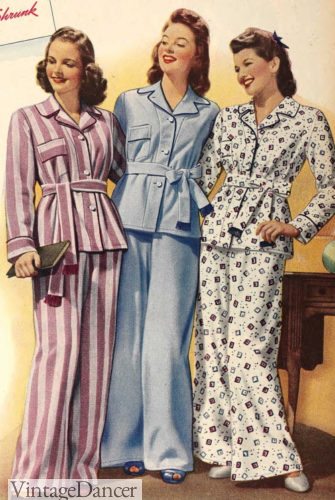
1941 pajamas
The main tailored look of 1940s pajamas provided a less feminine but more practical sleepwear solution for women. The 1940s were not the first decade to wear pajamas to bed, but they were the first to completely copy men’s pajamas. Many teens just shopped in the men’s department for their pajamas. Women’s versions were cut the same with a short collar, single or double breasted button up front, and matching wide leg pants. The pajama tops could either be short or long sleeved. Trimming was minimal and typically ribbon, ruffles, shirring, smocking, embroidery, or lace.
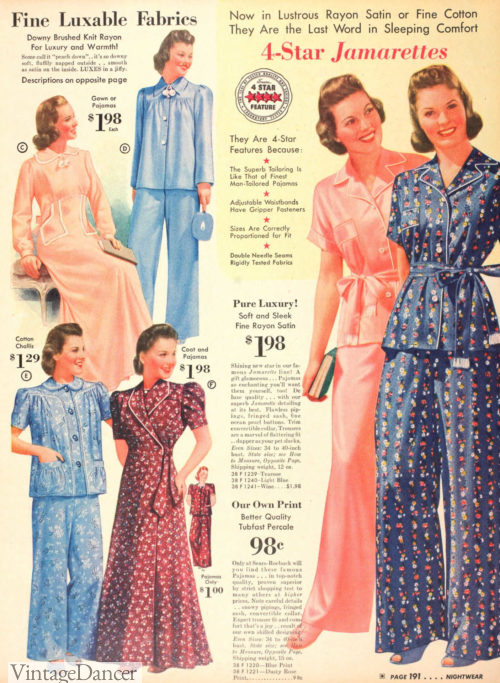
1940 pajamas
Some pajama styles combined sleepwear and playwear. A halter top pajama set was popular as well as a gathered scoop neck (similar to peasant tops).
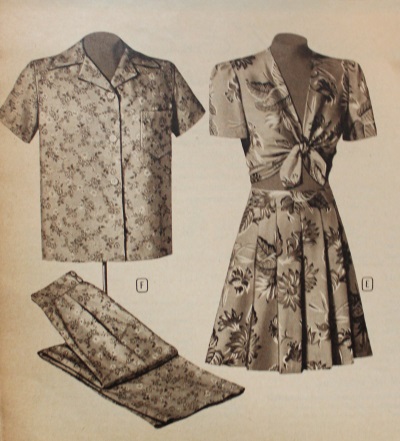
Playsuit style pajama next to regular box cut pajamas
Summer two-piece pajamas, sometimes called shorties, came with shorts that hit between the hip and knee. The full tunic shirt came down to the edge of the shorts which was an acceptable modest coverage. In the 1950s, these would be called babydoll nighties.
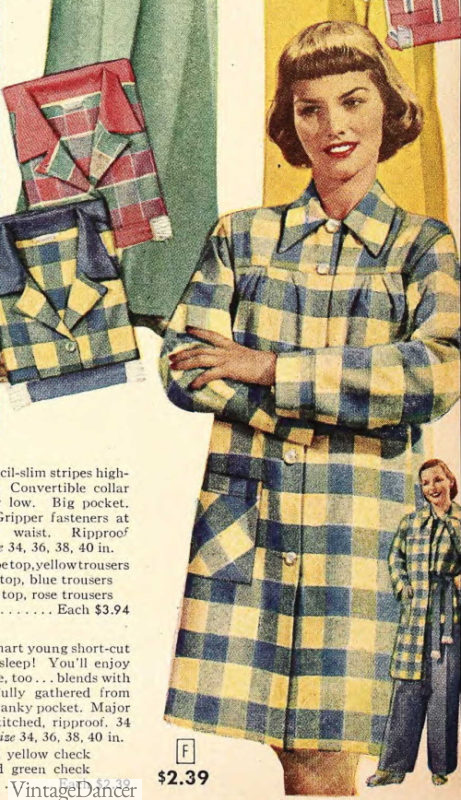
1949 short pajama shirt/coat/robe
Of the cotton sleepwear, percale and broadcloth were the best woven materials because they came in plain or printed designs. Cotton crepe is a good choice, too, because it needed little ironing. Cotton batise or lawn is ideal in summer because it is very thin and breathable. Cotton lawn makes good pajamas but not good nightgowns (wrinkles too much).
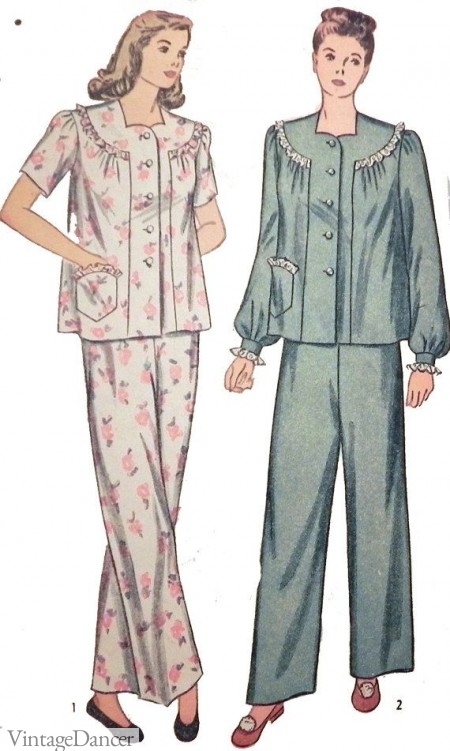
Light cotton pajamas
Quilted pajamas were very popular in winter as well. They are durable and simply designed, just like the nightgown version.
Footed pajamas such as those made by Doctor Dentons were a staple for children, and became a short-lived fad for women too. Anyone have a picture? I couldn’t find one.
1940s Bed Jackets
Bed jackets were a nighttime staple in the ’40s. Bed jackets had two uses. One use was a short covering to wear over sleepwear while taking care of her nightly beauty routine. The other use was a light layer of warmth for cool evenings and mornings. Many movies portray women sitting up in bed and reading with a bed jacket on.
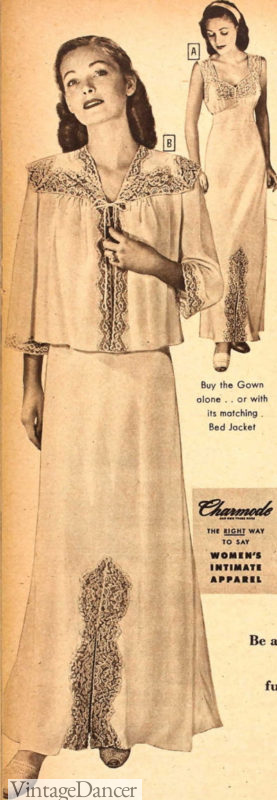
1948 rayon bed jacket and nightgown
The style of the time was a cropped jacket with elbow-length or slightly shorter than wrist length sleeves. It was about waist-length or a little longer. The jacket was cut straight and was loose fitting in both the jacket and sleeves. Trim is abundant, usually in a contrasting color. These jackets could tie around the neck with a ribbon, close with one button in the center, or button all the way down. They could be thin cotton or rayon satin, and were often quilted in winter weights. Some were also knitted and sweater-like, called “cuddlies.” Popular colors were white, pale pink, peach and light blue with white trim.
- 1942 chenille and brushed rayon bed jackets
- Knit bed jacket
1940s Robes
Robes, negligees, or house coats and jackets were worn all hours of the day. Many women chose to wear a house jacket in order to save wear and tear of day wear clothes. For others a negligee or house robe was only worn in the evenings over her nightgown. Housecoats were different then robes in that they fit like a dress with a snug waist and dress-like bodice. They were usually pretty florals and cheerful prints.
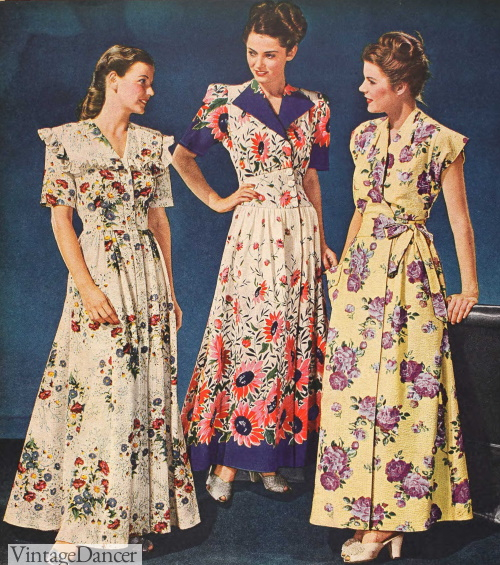
1946 floral housecoats- a cross between a dress and robe
Brunch coats were wrap over knee length housecoats worn in summer. Similar to housedresses except they could be wrapped over pajamas or lingerie while taking care of household chores.
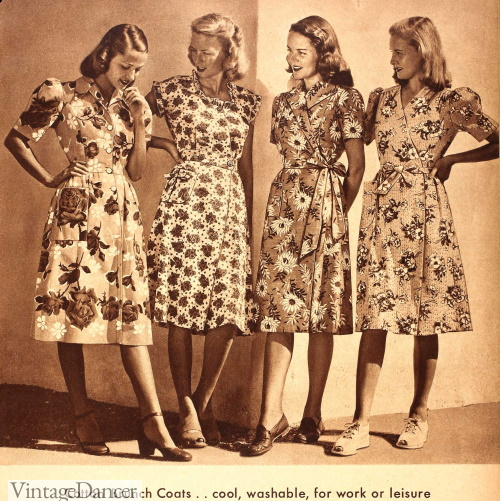
1944 brunch coats
A negligee was a pretty satin or rayon robe that was worn for beauty more than warmth. A bias cut robe flowed like a dress and was often similar in style to evening wear. Almost every bride received a silky nightgown and negligee set as a wedding gift.
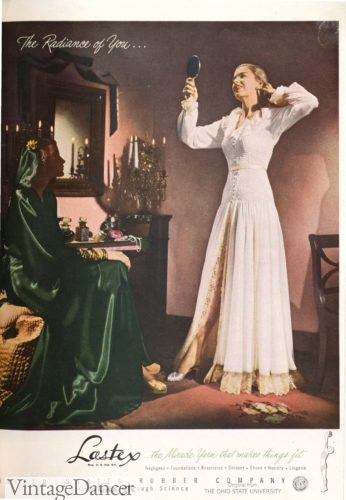
1947 Lace robe/housecoat ad for Lastex
Year round robes were usually made from cotton, rayon satin, crepe, percale, seersucker, moire, taffeta, jersey, crepe, and pique. Some had a small stand-up collar, while others had folded-over lapels. They usually tied with a sash belt at the waist or fastened on one side. Some zipped up the entire front length. Most robes had two large pockets at arm’s length in the front.
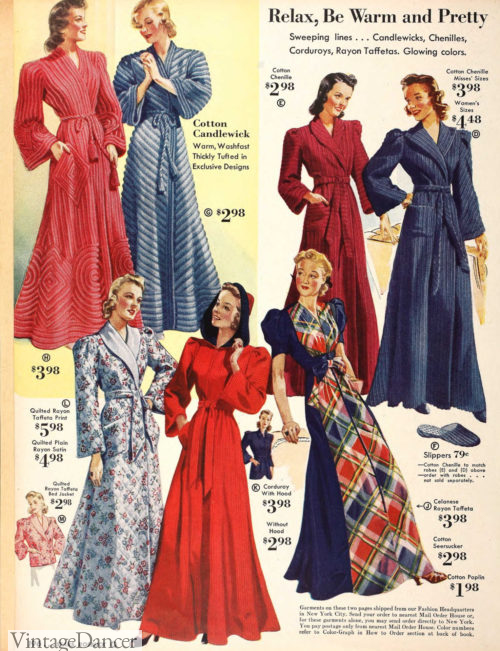
1940 robes of chenille, corduroy, candlewick, taffeta
During war time, these pockets were oversized “kangaroo pockets” so that a woman could grab her belongings quickly and carry them hands free. Most robes had long sleeves that were gathered and slightly puffed. Some even had shoulder pads. Robes were loose-fitting and cut straight, and sleeves were usually the same way.
Winter colors for robes were often darker and richer – burgundy, navy, plaids and floral patterns gave them a wintry feel. Heavy winter fabrics may be corduroy, velveteen, terry cloth, deep-pile chenille, candlewick, or quilted cotton fabric. Again, quilted robes were a very popular option for winter warmth.
- 1944 quilted robes
- 1944 corduroy and rayon robes
Bath robes were another robe style few women had the luxury or need to own. They were made of absorbent fabric such as terry cloth or chenille. While they could be worn around the house, they were mostly a transitional robe from bath to bedroom. The shorter length robes especially would not be worn out of complete privacy.
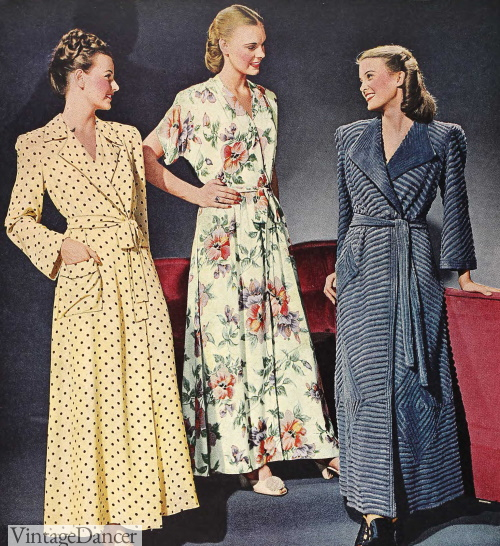
1946 polka dot, floral and chenille wrap robes
Slippers
Shop for vintage style house slippers.
- 1943 slippers
- 1948 slippers
